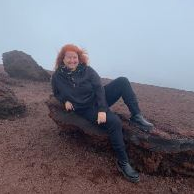The State-of-Art Methods and Case Studies in Geoforensics
A special issue of Geosciences (ISSN 2076-3263). This special issue belongs to the section "Sedimentology, Stratigraphy and Palaeontology".
Deadline for manuscript submissions: 30 April 2024 | Viewed by 6311
Special Issue Editors
Interests: forensic geology; environmental forensics; applied geophysics; ERT; GPR; forensic trace and micro-trace analysis; groundwater pollution; criminalistics
Special Issues, Collections and Topics in MDPI journals
Interests: biostratigraphy; tectonics; sequence stratigraphy; geological mapping; sedimentary basins stratigraphy; structural geology; active tectonics; paleoceanography; basin analysis; marine geology; geotourism; sedimentology; exploration geophysics; carbonates; quaternary geology; palaeoecology; paleomagnetism
Special Issues, Collections and Topics in MDPI journals
Interests: geomorphology; soils; geopedology; paleopedology; micromorphology; geoforensics; sedimentology; geoarchaeology
Interests: Raman spectroscopy; geochemistry; source-to-sink sedimentary dynamics; environmental mineralogy; mineral pigments; CLIL (Content and Language Integrated Learning) methodology
Special Issues, Collections and Topics in MDPI journals
Special Issue Information
Dear Colleagues,
The Special Issue “The State-of-Art Methods and Case Studies in Geoforensics” is aimed at providing selected contributions on advances in the research, new ideas, analytical techniques, and modern applications in the wide field of geosciences applied to criminal investigations.
Geoforensics is the discipline that uses the scientific principles and techniques of the geosciences to solve criminal cases, assisting law enforcements, reconstructing events, or providing evidence then used in a court of law. It may concern serious crimes against human beings and animals, environment, and property.
Potential topics include but are not limited to:
- Geoforensics and medical geology;
- Forensic sedimentology, stratigraphy, micropaleontology, and soil sciences;
- New techniques for the study of soils and gemstones;
- Raman spectroscopy applied to geoforensics and environmental crimes;
- Searching for clandestine graves, field experimentation and experimental burials;
- Geographical profiling applied to serial crimes and GIS-based priority search maps applied to criminal investigations.
As Guest Editors, we would like to kindly invite you to contribute with research papers on any topic related to this Special Issue.
Dr. Roberta Somma
Dr. Rosanna Maniscalco
Dr. Luca Trombino
Dr. Sebastiano Ettore Spoto
Guest Editors
Manuscript Submission Information
Manuscripts should be submitted online at www.mdpi.com by registering and logging in to this website. Once you are registered, click here to go to the submission form. Manuscripts can be submitted until the deadline. All submissions that pass pre-check are peer-reviewed. Accepted papers will be published continuously in the journal (as soon as accepted) and will be listed together on the special issue website. Research articles, review articles as well as short communications are invited. For planned papers, a title and short abstract (about 100 words) can be sent to the Editorial Office for announcement on this website.
Submitted manuscripts should not have been published previously, nor be under consideration for publication elsewhere (except conference proceedings papers). All manuscripts are thoroughly refereed through a single-blind peer-review process. A guide for authors and other relevant information for submission of manuscripts is available on the Instructions for Authors page. Geosciences is an international peer-reviewed open access monthly journal published by MDPI.
Please visit the Instructions for Authors page before submitting a manuscript. The Article Processing Charge (APC) for publication in this open access journal is 1800 CHF (Swiss Francs). Submitted papers should be well formatted and use good English. Authors may use MDPI's English editing service prior to publication or during author revisions.
Keywords
- geoforensics
- medical geology
- gemstones
- raman spectroscopy
- clandestine graves
- geographical profiling
- GIS-based RAG maps








